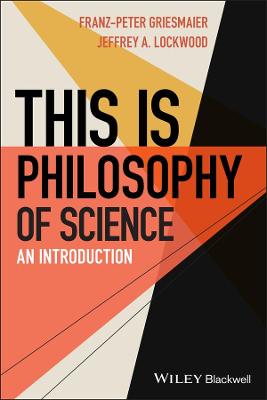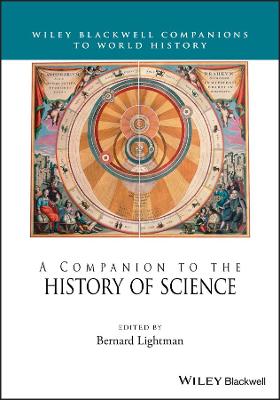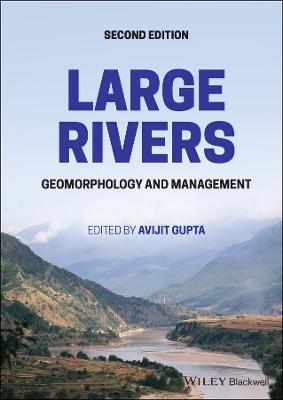This is Philosophy of Science
 -15%
portes grátis
-15%
portes grátis
This is Philosophy of Science
An Introduction
Lockwood, Jeffrey A.; Griesmaier, Franz-Peter; Hales, Steven D.
John Wiley and Sons Ltd
03/2022
304
Mole
Inglês
9781119757993
15 a 20 dias
440
Descrição não disponível.
Preface ix
Acknowledgments xi
About the Companion Website xii
1 Pillars of Science: Reasons, Knowledge, and Truth 1
1.1 Epistemic Reasons 2
1.2 Reasoning from Evidence 7
1.3 Knowledge and Truth 11
1.4 Facts, Hypotheses, and Theories 12
1.5 Conclusion 17
2 Evidence, Observation, and Measurement 19
2.1 The Promises of Evidence 19
2.2 Basic Evidence and Derived Evidence 21
2.3 Measurement 26
2.4 Conclusion 31
3 Uses of Evidence 33
3.1 From Observation to Hypothesis 33
3.2 Theory Appraisal 36
3.3 The Demarcation Problem 42
3.4 Conclusion 49
4 Evidence, Rationality, and Disagreement 51
4.1 From Weak to Strong Evidence 51
4.2 Evidence and Rationality 60
4.3 Explaining Scientific Disagreement 63
4.4 Conclusion 69
5 The Nature of Probability 71
5.1 Basics of Probability 71
5.2 Interpretations of Probability 73
5.3 Probabilities as Credences 74
5.4 Epistemic Probabilities 79
5.5 Probabilities as Objective Chances 81
5.6 Probabilities and Defeasible Reasoning 84
5.7 Fallacies 86
5.8 Conclusion 87
6 Do Not Be Misled: Confounds and Controls 88
6.1 Trials and Errors 88
6.2 Treatment and Control 89
6.3 Randomization 94
6.4 Conclusion 99
7 Physical Experiments and Their Design 101
7.1 Historical Remarks 101
7.2 Setting Experimental Parameters 102
7.3 Dependent and Independent Variables 103
7.4 Learning from Experiment 106
7.5 Types of Errors: Pick Your Poison 112
7.6 Relationships between Experiment and Theory 113
7.7 Conclusion 117
8 Experimental Methods That They Don't Teach 119
8.1 Found and Natural Experiments 119
8.2 Thought Experiments 122
8.3 The Structure and Evidential Value of Thought Experiments 133
8.4 Learning from TEs 136
8.5 The Ubiquity of Thought Experiments 139
8.6 Are Computer Simulations Thought Experiments? 141
8.7 Conclusion 142
9 Models: Useful Lies and Informative Fictions 144
9.1 The Nature of Models 146
9.2 Modelling Techniques 153
9.3 Analogies 156
9.4 Learning from Models 159
9.5 Conclusion 165
10 Causation and Causal Inference 167
10.1 What's the Problem with Causation? 167
10.2 Hume's Challenge 168
10.3 Causation as Mere Regularities 170
10.4 Conserved Quantities to the Rescue? 171
10.5 Causation and Manipulation 173
10.6 Conclusion 177
11 Strange Causation - Time Travel and Remote Action 179
11.1 On Influencing the Past 180
11.2 Quantum Mechanics and Locality 191
11.3 Conclusion 196
12 But Is Any of It Real? 198
12.1 Theories and Truth 198
12.2 A Map of the Views 199
12.3 Are Groups Real? 201
12.4 Laws of Nature 205
12.5 Is Everything Real Observable? 208
12.6 Realism vs. Antirealism 213
12.7 Structural Realism 218
12.8 Realism and Explanation 219
12.9 Conclusion 221
13 Explanation and Understanding 223
13.1 The Deductive-Nomological Model 224
13.2 The Causal Model 229
13.3 The Unificationist Model 231
13.4 The Pragmatic Model 234
13.5 What about Realism? 237
13.6 Conclusion 238
14 Fundamental Theories and the Organization of Science 240
14.1 The Layer Cake Model 242
14.2 Classical Reductionism 243
14.3 Functional Concepts 248
14.4 The Functional Model 250
14.5 Emergence 253
14.6 Interdisciplinary Research 257
14.7 Conclusion 259
15 Scientific Progress 262
15.1 Science and Technology 263
15.2 Goals of Science 264
15.3 Reduction in the Limit 265
15.4 How Theories Are Born 266
15.5 What Kind of Progress? 269
15.6 From Theories to Research Programmes 275
15.7 Methodological Anarchism 277
15.8 Incommensurability 279
15.9 Structural Realism and Progress 284
15.10 Conclusion 286
Index 288
Acknowledgments xi
About the Companion Website xii
1 Pillars of Science: Reasons, Knowledge, and Truth 1
1.1 Epistemic Reasons 2
1.2 Reasoning from Evidence 7
1.3 Knowledge and Truth 11
1.4 Facts, Hypotheses, and Theories 12
1.5 Conclusion 17
2 Evidence, Observation, and Measurement 19
2.1 The Promises of Evidence 19
2.2 Basic Evidence and Derived Evidence 21
2.3 Measurement 26
2.4 Conclusion 31
3 Uses of Evidence 33
3.1 From Observation to Hypothesis 33
3.2 Theory Appraisal 36
3.3 The Demarcation Problem 42
3.4 Conclusion 49
4 Evidence, Rationality, and Disagreement 51
4.1 From Weak to Strong Evidence 51
4.2 Evidence and Rationality 60
4.3 Explaining Scientific Disagreement 63
4.4 Conclusion 69
5 The Nature of Probability 71
5.1 Basics of Probability 71
5.2 Interpretations of Probability 73
5.3 Probabilities as Credences 74
5.4 Epistemic Probabilities 79
5.5 Probabilities as Objective Chances 81
5.6 Probabilities and Defeasible Reasoning 84
5.7 Fallacies 86
5.8 Conclusion 87
6 Do Not Be Misled: Confounds and Controls 88
6.1 Trials and Errors 88
6.2 Treatment and Control 89
6.3 Randomization 94
6.4 Conclusion 99
7 Physical Experiments and Their Design 101
7.1 Historical Remarks 101
7.2 Setting Experimental Parameters 102
7.3 Dependent and Independent Variables 103
7.4 Learning from Experiment 106
7.5 Types of Errors: Pick Your Poison 112
7.6 Relationships between Experiment and Theory 113
7.7 Conclusion 117
8 Experimental Methods That They Don't Teach 119
8.1 Found and Natural Experiments 119
8.2 Thought Experiments 122
8.3 The Structure and Evidential Value of Thought Experiments 133
8.4 Learning from TEs 136
8.5 The Ubiquity of Thought Experiments 139
8.6 Are Computer Simulations Thought Experiments? 141
8.7 Conclusion 142
9 Models: Useful Lies and Informative Fictions 144
9.1 The Nature of Models 146
9.2 Modelling Techniques 153
9.3 Analogies 156
9.4 Learning from Models 159
9.5 Conclusion 165
10 Causation and Causal Inference 167
10.1 What's the Problem with Causation? 167
10.2 Hume's Challenge 168
10.3 Causation as Mere Regularities 170
10.4 Conserved Quantities to the Rescue? 171
10.5 Causation and Manipulation 173
10.6 Conclusion 177
11 Strange Causation - Time Travel and Remote Action 179
11.1 On Influencing the Past 180
11.2 Quantum Mechanics and Locality 191
11.3 Conclusion 196
12 But Is Any of It Real? 198
12.1 Theories and Truth 198
12.2 A Map of the Views 199
12.3 Are Groups Real? 201
12.4 Laws of Nature 205
12.5 Is Everything Real Observable? 208
12.6 Realism vs. Antirealism 213
12.7 Structural Realism 218
12.8 Realism and Explanation 219
12.9 Conclusion 221
13 Explanation and Understanding 223
13.1 The Deductive-Nomological Model 224
13.2 The Causal Model 229
13.3 The Unificationist Model 231
13.4 The Pragmatic Model 234
13.5 What about Realism? 237
13.6 Conclusion 238
14 Fundamental Theories and the Organization of Science 240
14.1 The Layer Cake Model 242
14.2 Classical Reductionism 243
14.3 Functional Concepts 248
14.4 The Functional Model 250
14.5 Emergence 253
14.6 Interdisciplinary Research 257
14.7 Conclusion 259
15 Scientific Progress 262
15.1 Science and Technology 263
15.2 Goals of Science 264
15.3 Reduction in the Limit 265
15.4 How Theories Are Born 266
15.5 What Kind of Progress? 269
15.6 From Theories to Research Programmes 275
15.7 Methodological Anarchism 277
15.8 Incommensurability 279
15.9 Structural Realism and Progress 284
15.10 Conclusion 286
Index 288
Este título pertence ao(s) assunto(s) indicados(s). Para ver outros títulos clique no assunto desejado.
philosophy of science; philosophy of science textbook; philosophy of science introduction; philosophy of science issues; philosophy of science debates; philosophy of science questions; philosophy of science STEM; philosophy of science fundamentals; philosophy of science history
Preface ix
Acknowledgments xi
About the Companion Website xii
1 Pillars of Science: Reasons, Knowledge, and Truth 1
1.1 Epistemic Reasons 2
1.2 Reasoning from Evidence 7
1.3 Knowledge and Truth 11
1.4 Facts, Hypotheses, and Theories 12
1.5 Conclusion 17
2 Evidence, Observation, and Measurement 19
2.1 The Promises of Evidence 19
2.2 Basic Evidence and Derived Evidence 21
2.3 Measurement 26
2.4 Conclusion 31
3 Uses of Evidence 33
3.1 From Observation to Hypothesis 33
3.2 Theory Appraisal 36
3.3 The Demarcation Problem 42
3.4 Conclusion 49
4 Evidence, Rationality, and Disagreement 51
4.1 From Weak to Strong Evidence 51
4.2 Evidence and Rationality 60
4.3 Explaining Scientific Disagreement 63
4.4 Conclusion 69
5 The Nature of Probability 71
5.1 Basics of Probability 71
5.2 Interpretations of Probability 73
5.3 Probabilities as Credences 74
5.4 Epistemic Probabilities 79
5.5 Probabilities as Objective Chances 81
5.6 Probabilities and Defeasible Reasoning 84
5.7 Fallacies 86
5.8 Conclusion 87
6 Do Not Be Misled: Confounds and Controls 88
6.1 Trials and Errors 88
6.2 Treatment and Control 89
6.3 Randomization 94
6.4 Conclusion 99
7 Physical Experiments and Their Design 101
7.1 Historical Remarks 101
7.2 Setting Experimental Parameters 102
7.3 Dependent and Independent Variables 103
7.4 Learning from Experiment 106
7.5 Types of Errors: Pick Your Poison 112
7.6 Relationships between Experiment and Theory 113
7.7 Conclusion 117
8 Experimental Methods That They Don't Teach 119
8.1 Found and Natural Experiments 119
8.2 Thought Experiments 122
8.3 The Structure and Evidential Value of Thought Experiments 133
8.4 Learning from TEs 136
8.5 The Ubiquity of Thought Experiments 139
8.6 Are Computer Simulations Thought Experiments? 141
8.7 Conclusion 142
9 Models: Useful Lies and Informative Fictions 144
9.1 The Nature of Models 146
9.2 Modelling Techniques 153
9.3 Analogies 156
9.4 Learning from Models 159
9.5 Conclusion 165
10 Causation and Causal Inference 167
10.1 What's the Problem with Causation? 167
10.2 Hume's Challenge 168
10.3 Causation as Mere Regularities 170
10.4 Conserved Quantities to the Rescue? 171
10.5 Causation and Manipulation 173
10.6 Conclusion 177
11 Strange Causation - Time Travel and Remote Action 179
11.1 On Influencing the Past 180
11.2 Quantum Mechanics and Locality 191
11.3 Conclusion 196
12 But Is Any of It Real? 198
12.1 Theories and Truth 198
12.2 A Map of the Views 199
12.3 Are Groups Real? 201
12.4 Laws of Nature 205
12.5 Is Everything Real Observable? 208
12.6 Realism vs. Antirealism 213
12.7 Structural Realism 218
12.8 Realism and Explanation 219
12.9 Conclusion 221
13 Explanation and Understanding 223
13.1 The Deductive-Nomological Model 224
13.2 The Causal Model 229
13.3 The Unificationist Model 231
13.4 The Pragmatic Model 234
13.5 What about Realism? 237
13.6 Conclusion 238
14 Fundamental Theories and the Organization of Science 240
14.1 The Layer Cake Model 242
14.2 Classical Reductionism 243
14.3 Functional Concepts 248
14.4 The Functional Model 250
14.5 Emergence 253
14.6 Interdisciplinary Research 257
14.7 Conclusion 259
15 Scientific Progress 262
15.1 Science and Technology 263
15.2 Goals of Science 264
15.3 Reduction in the Limit 265
15.4 How Theories Are Born 266
15.5 What Kind of Progress? 269
15.6 From Theories to Research Programmes 275
15.7 Methodological Anarchism 277
15.8 Incommensurability 279
15.9 Structural Realism and Progress 284
15.10 Conclusion 286
Index 288
Acknowledgments xi
About the Companion Website xii
1 Pillars of Science: Reasons, Knowledge, and Truth 1
1.1 Epistemic Reasons 2
1.2 Reasoning from Evidence 7
1.3 Knowledge and Truth 11
1.4 Facts, Hypotheses, and Theories 12
1.5 Conclusion 17
2 Evidence, Observation, and Measurement 19
2.1 The Promises of Evidence 19
2.2 Basic Evidence and Derived Evidence 21
2.3 Measurement 26
2.4 Conclusion 31
3 Uses of Evidence 33
3.1 From Observation to Hypothesis 33
3.2 Theory Appraisal 36
3.3 The Demarcation Problem 42
3.4 Conclusion 49
4 Evidence, Rationality, and Disagreement 51
4.1 From Weak to Strong Evidence 51
4.2 Evidence and Rationality 60
4.3 Explaining Scientific Disagreement 63
4.4 Conclusion 69
5 The Nature of Probability 71
5.1 Basics of Probability 71
5.2 Interpretations of Probability 73
5.3 Probabilities as Credences 74
5.4 Epistemic Probabilities 79
5.5 Probabilities as Objective Chances 81
5.6 Probabilities and Defeasible Reasoning 84
5.7 Fallacies 86
5.8 Conclusion 87
6 Do Not Be Misled: Confounds and Controls 88
6.1 Trials and Errors 88
6.2 Treatment and Control 89
6.3 Randomization 94
6.4 Conclusion 99
7 Physical Experiments and Their Design 101
7.1 Historical Remarks 101
7.2 Setting Experimental Parameters 102
7.3 Dependent and Independent Variables 103
7.4 Learning from Experiment 106
7.5 Types of Errors: Pick Your Poison 112
7.6 Relationships between Experiment and Theory 113
7.7 Conclusion 117
8 Experimental Methods That They Don't Teach 119
8.1 Found and Natural Experiments 119
8.2 Thought Experiments 122
8.3 The Structure and Evidential Value of Thought Experiments 133
8.4 Learning from TEs 136
8.5 The Ubiquity of Thought Experiments 139
8.6 Are Computer Simulations Thought Experiments? 141
8.7 Conclusion 142
9 Models: Useful Lies and Informative Fictions 144
9.1 The Nature of Models 146
9.2 Modelling Techniques 153
9.3 Analogies 156
9.4 Learning from Models 159
9.5 Conclusion 165
10 Causation and Causal Inference 167
10.1 What's the Problem with Causation? 167
10.2 Hume's Challenge 168
10.3 Causation as Mere Regularities 170
10.4 Conserved Quantities to the Rescue? 171
10.5 Causation and Manipulation 173
10.6 Conclusion 177
11 Strange Causation - Time Travel and Remote Action 179
11.1 On Influencing the Past 180
11.2 Quantum Mechanics and Locality 191
11.3 Conclusion 196
12 But Is Any of It Real? 198
12.1 Theories and Truth 198
12.2 A Map of the Views 199
12.3 Are Groups Real? 201
12.4 Laws of Nature 205
12.5 Is Everything Real Observable? 208
12.6 Realism vs. Antirealism 213
12.7 Structural Realism 218
12.8 Realism and Explanation 219
12.9 Conclusion 221
13 Explanation and Understanding 223
13.1 The Deductive-Nomological Model 224
13.2 The Causal Model 229
13.3 The Unificationist Model 231
13.4 The Pragmatic Model 234
13.5 What about Realism? 237
13.6 Conclusion 238
14 Fundamental Theories and the Organization of Science 240
14.1 The Layer Cake Model 242
14.2 Classical Reductionism 243
14.3 Functional Concepts 248
14.4 The Functional Model 250
14.5 Emergence 253
14.6 Interdisciplinary Research 257
14.7 Conclusion 259
15 Scientific Progress 262
15.1 Science and Technology 263
15.2 Goals of Science 264
15.3 Reduction in the Limit 265
15.4 How Theories Are Born 266
15.5 What Kind of Progress? 269
15.6 From Theories to Research Programmes 275
15.7 Methodological Anarchism 277
15.8 Incommensurability 279
15.9 Structural Realism and Progress 284
15.10 Conclusion 286
Index 288
Este título pertence ao(s) assunto(s) indicados(s). Para ver outros títulos clique no assunto desejado.







